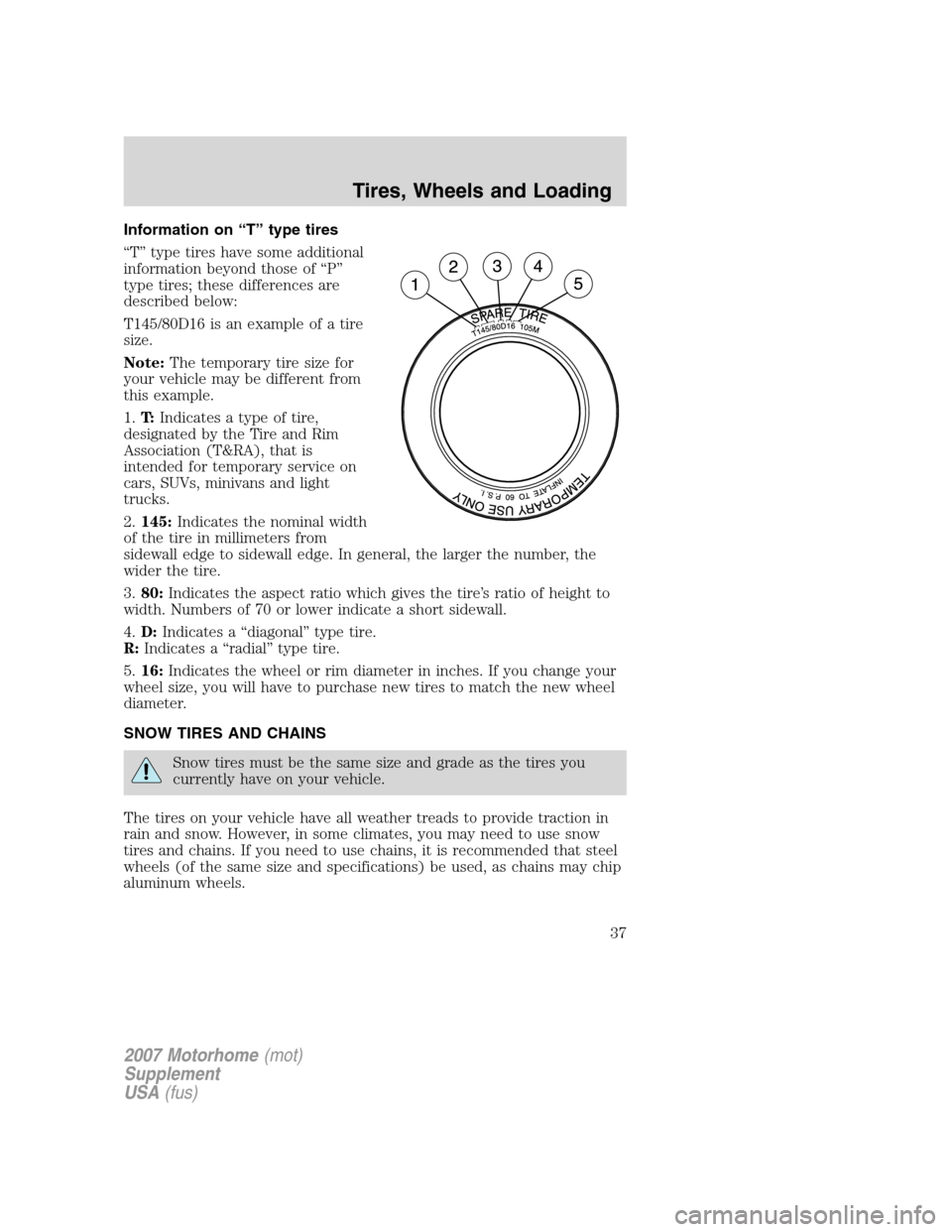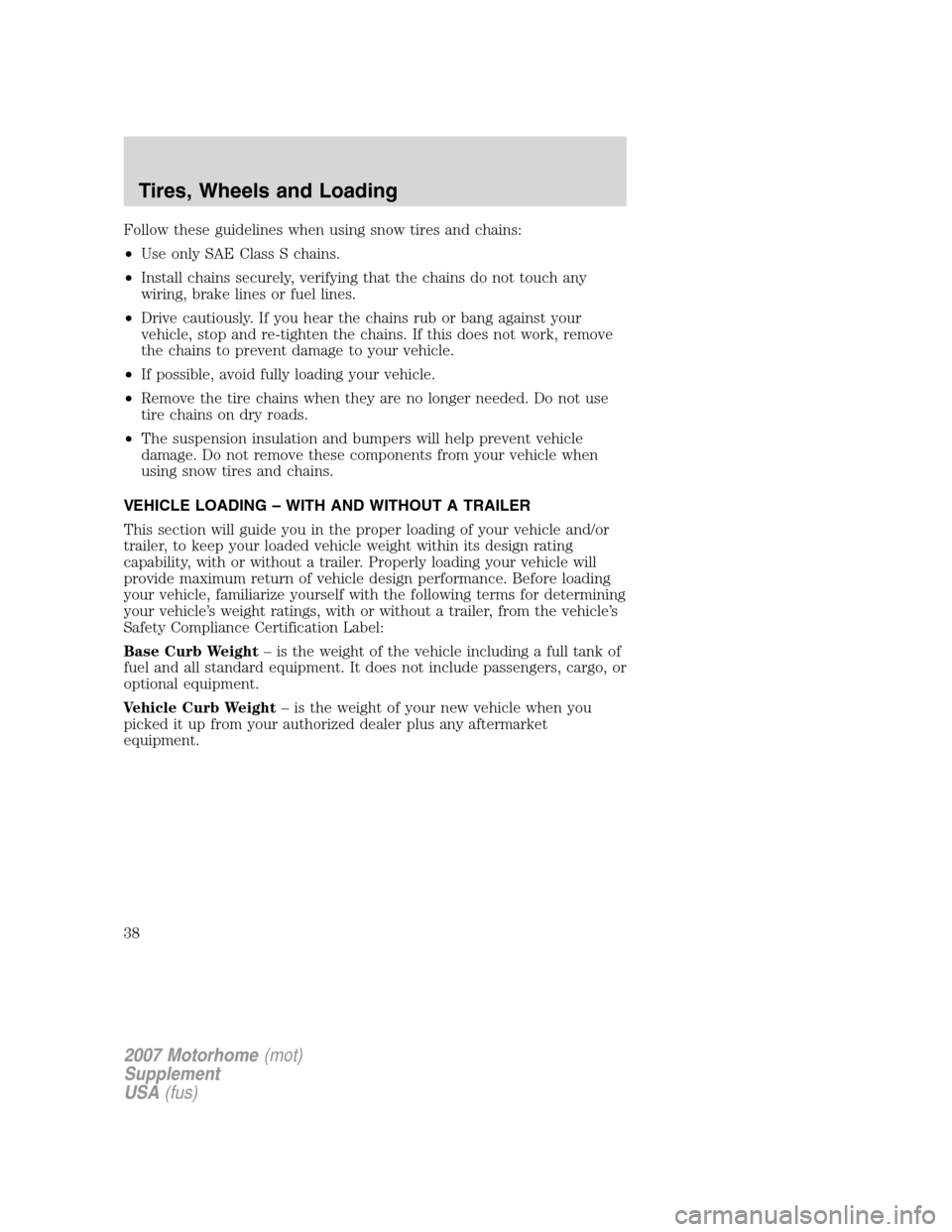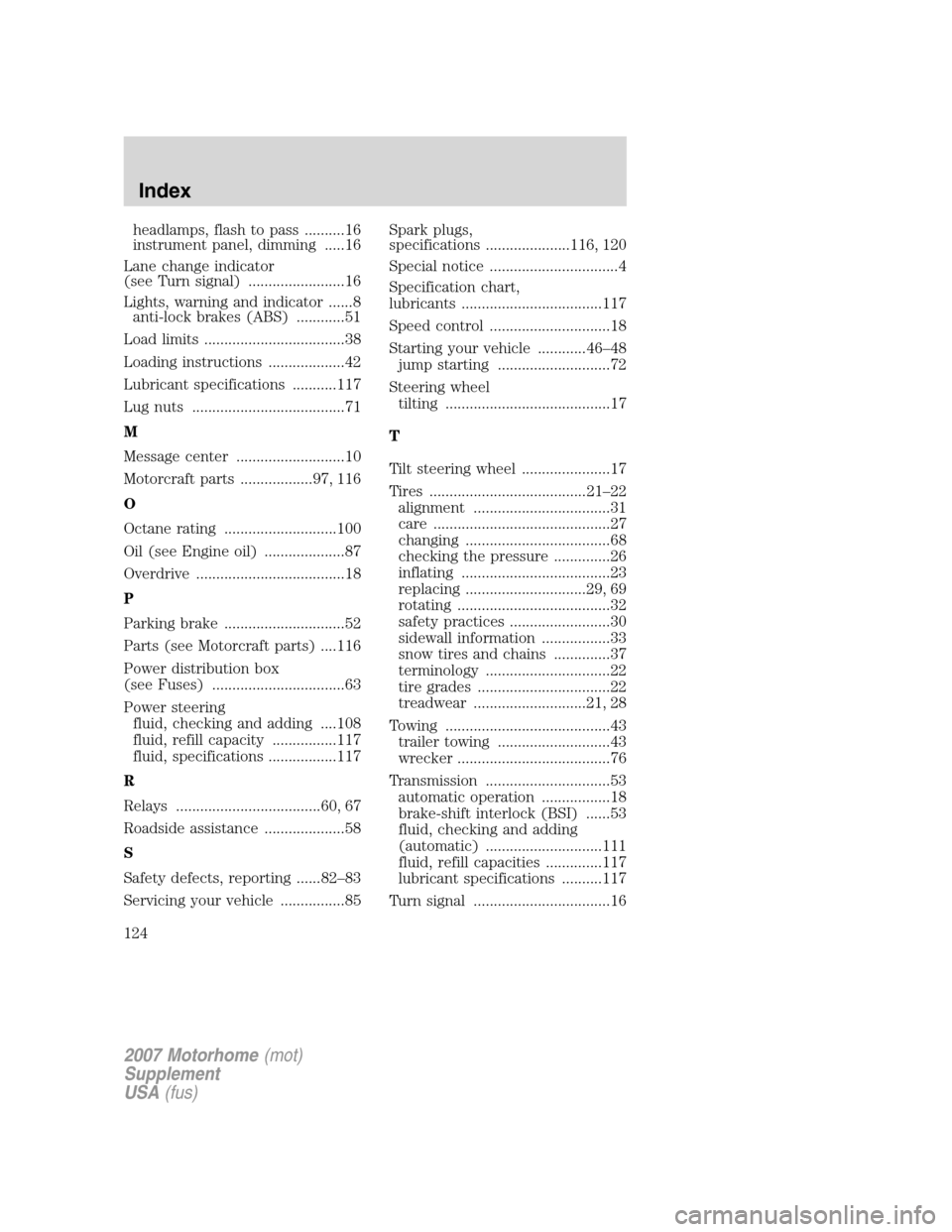Page 37 of 128

Information on “T” type tires
“T” type tires have some additional
information beyond those of “P”
type tires; these differences are
described below:
T145/80D16 is an example of a tire
size.
Note:The temporary tire size for
your vehicle may be different from
this example.
1.T:Indicates a type of tire,
designated by the Tire and Rim
Association (T&RA), that is
intended for temporary service on
cars, SUVs, minivans and light
trucks.
2.145:Indicates the nominal width
of the tire in millimeters from
sidewall edge to sidewall edge. In general, the larger the number, the
wider the tire.
3.80:Indicates the aspect ratio which gives the tire’s ratio of height to
width. Numbers of 70 or lower indicate a short sidewall.
4.D:Indicates a “diagonal” type tire.
R:Indicates a “radial” type tire.
5.16:Indicates the wheel or rim diameter in inches. If you change your
wheel size, you will have to purchase new tires to match the new wheel
diameter.
SNOW TIRES AND CHAINS
Snow tires must be the same size and grade as the tires you
currently have on your vehicle.
The tires on your vehicle have all weather treads to provide traction in
rain and snow. However, in some climates, you may need to use snow
tires and chains. If you need to use chains, it is recommended that steel
wheels (of the same size and specifications) be used, as chains may chip
aluminum wheels.
2007 Motorhome(mot)
Supplement
USA(fus)
Tires, Wheels and Loading
37
Page 38 of 128

Follow these guidelines when using snow tires and chains:
•Use only SAE Class S chains.
•Install chains securely, verifying that the chains do not touch any
wiring, brake lines or fuel lines.
•Drive cautiously. If you hear the chains rub or bang against your
vehicle, stop and re-tighten the chains. If this does not work, remove
the chains to prevent damage to your vehicle.
•If possible, avoid fully loading your vehicle.
•Remove the tire chains when they are no longer needed. Do not use
tire chains on dry roads.
•The suspension insulation and bumpers will help prevent vehicle
damage. Do not remove these components from your vehicle when
using snow tires and chains.
VEHICLE LOADING – WITH AND WITHOUT A TRAILER
This section will guide you in the proper loading of your vehicle and/or
trailer, to keep your loaded vehicle weight within its design rating
capability, with or without a trailer. Properly loading your vehicle will
provide maximum return of vehicle design performance. Before loading
your vehicle, familiarize yourself with the following terms for determining
your vehicle’s weight ratings, with or without a trailer, from the vehicle’s
Safety Compliance Certification Label:
Base Curb Weight– is the weight of the vehicle including a full tank of
fuel and all standard equipment. It does not include passengers, cargo, or
optional equipment.
Vehicle Curb Weight– is the weight of your new vehicle when you
picked it up from your authorized dealer plus any aftermarket
equipment.
2007 Motorhome(mot)
Supplement
USA(fus)
Tires, Wheels and Loading
38
Page 124 of 128

headlamps, flash to pass ..........16
instrument panel, dimming .....16
Lane change indicator
(see Turn signal) ........................16
Lights, warning and indicator ......8 anti-lock brakes (ABS) ............51
Load limits ...................................38
Loading instructions ...................42
Lubricant specifications ...........117
Lug nuts ......................................71
M
Message center ...........................10
Motorcraft parts ..................97, 116
O
Octane rating ............................100
Oil (see Engine oil) ....................87
Overdrive .....................................18
P
Parking brake ..............................52
Parts (see Motorcraft parts) ....116
Power distribution box
(see Fuses) .................................63
Power steering fluid, checking and adding ....108
fluid, refill capacity ................117
fluid, specifications .................117
R
Relays ....................................60, 67
Roadside assistance ....................58
S
Safety defects, reporting ......82–83
Servicing your vehicle ................85 Spark plugs,
specifications .....................116, 120
Special notice ................................4
Specification chart,
lubricants ...................................117
Speed control ..............................18
Starting your vehicle ............46–48
jump starting ............................72
Steering wheel tilting .........................................17
T
Tilt steering wheel ......................17
Tires .......................................21–22 alignment ..................................31
care ............................................27
changing ....................................68
checking the pressure ..............26
inflating .....................................23
replacing ..............................29, 69
rotating ......................................32
safety practices .........................30
sidewall information .................33
snow tires and chains ..............37
terminology ...............................22
tire grades .................................22
treadwear ............................21, 28
Towing .........................................43 trailer towing ............................43
wrecker ......................................76
Transmission ...............................53 automatic operation .................18
brake-shift interlock (BSI) ......53
fluid, checking and adding
(automatic) .............................111
fluid, refill capacities ..............117
lubricant specifications ..........117
Turn signal ..................................16
2007 Motorhome (mot)
Supplement
USA (fus)
Index
124